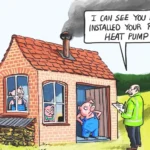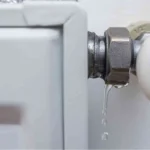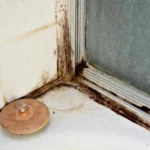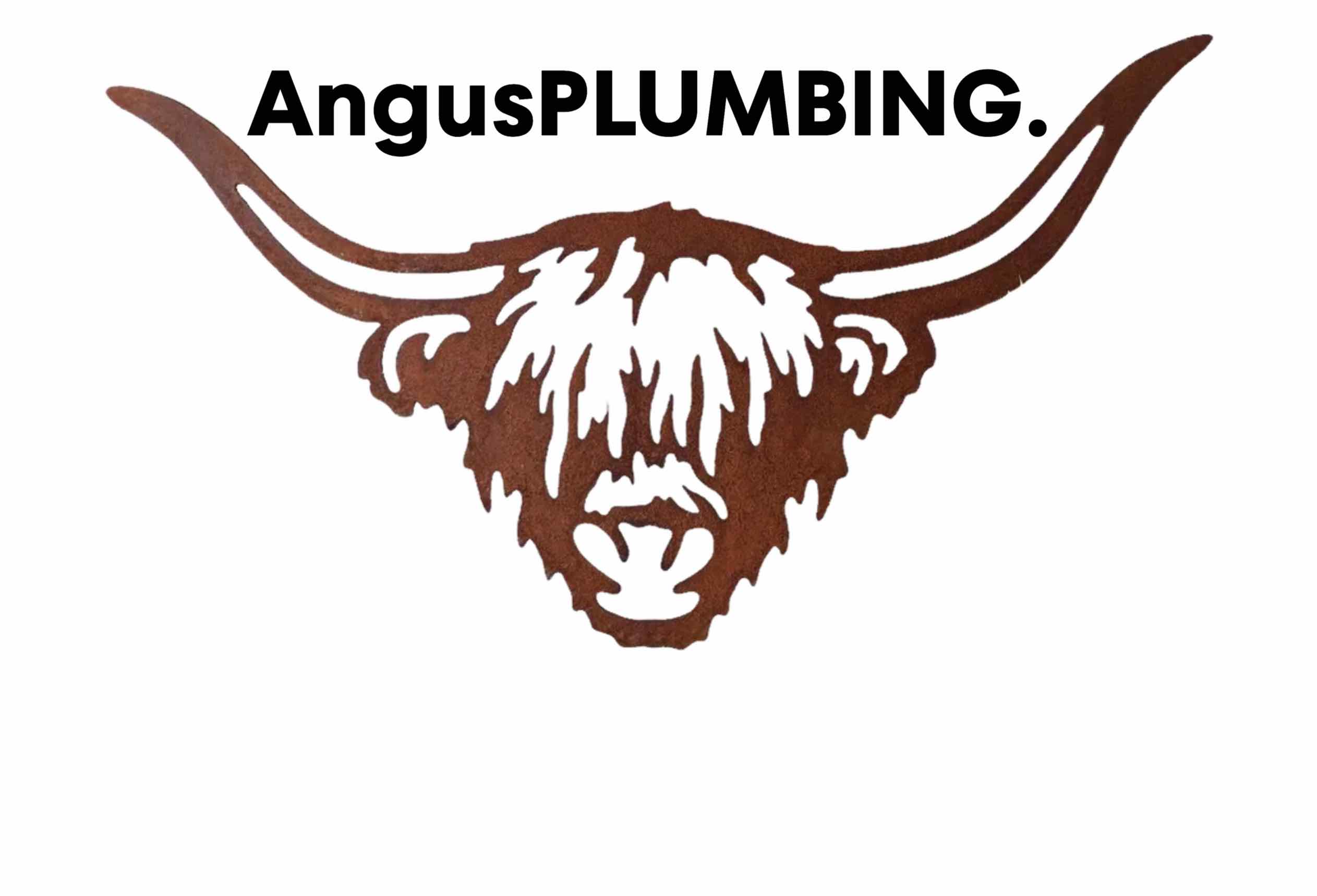Lower bills - yes. Warmer home - always. Fewer repairs - definitely.


Plumber - Paul
Paul's a member of the Chartered Institute of Plumbing & Heating Engineers, Water Regs UK (formerley WRAS – Water Regulations Advsiory Scheme) certificated as well as a qualified unvented cylinder engineer and a qualified heat pump engineer.
A power flush is essentially a deep, intense cleanse of your heating system – removing sludge, rust and other random bits of deposit.
Do you want your central heating system to last longer, breakdown less often and help save you money? If the answer is yes – read on!
Why do you need to power flush a central heating system?
A central heating system is an essential component of a comfortable and functional home. It provides warmth and hot water to the entire house, making it a vital part of daily life. However, over time, central heating systems can experience various problems such as poor circulation, breakdowns and inefficient heating. One of the most effective solutions to these issues is power flushing. In this blog, we’ll explain what power flushing is, why it’s necessary, and how it can benefit your central heating system.
Signs your system needs a power flush include –
- Radiators consistently needing to be bled
- Radiators with cold spots
- Central heating taking a long time to heat up adequately
- Cold radiators even when the pipes are hot
- Radiators with discoloured water
- A boiler and heating system that is noisier than previously
- Radiators in your home that don’t heat up
- Radiator leaks
- Dirty radiator water
- Pump failure
- Boiler failure
What is power flushing?
Power flushing is a thorough cleaning process that removes sludge, rust, debris, and other contaminants from your central heating system. It involves connecting a powerful machine to the heating system and circulating a high-flow, low-pressure cleansing solution which dislodges and flushes out all the accumulated debris and sludge, leaving the system clean and free-flowing.

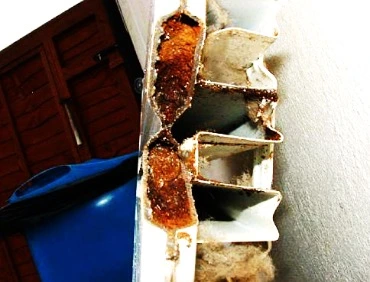
Sludge
Sludge build-up is a common problem in older central heating systems, but it can also occur in newer systems if they are not maintained properly. Some of the factors that can contribute to sludge build-up include –
- Inadequate cleaning. If a central heating system is not cleaned regularly, debris and sludge can accumulate over time, reducing its efficiency and effectiveness.
- Poor water quality. The quality of the water used in a central heating system can also affect its performance. Hard water, for example, can cause limescale build-up in the pipes and radiators, while soft water can cause corrosion.
- Inadequate corrosion protection. Corrosion inhibitors are added to central heating systems to protect them from rust and other forms of corrosion. If the levels of corrosion inhibitor aren’t maintained, the system may be more susceptible to corrosion and sludge build-up.
- Old or faulty components. Old or faulty components, such as pumps, valves, and radiators, can also contribute to sludge build-up in a central heating system.
When do you need a power flush?
In a perfect world, a power flush (or any flush for that matter) should be performed every five or so years. This ensures the quality of heating systems water is maintained to a high standard and helps to prevent damage to metallic components, as well as the development of clogs or blockages.
Most homeowners also choose to have a power flush before having a new boiler installed (especially if their existing heating system is old). It’s a good opportunity to clean out your radiators and remove any grime and build up that has accumulated over the years. And significantly cheaper than the cost of replacing radiators that haven’t been properly maintained.
Why is power flushing’s necessary?
Improves the efficiency of your heating system
The build-up of sludge and debris in a central heating system can cause blockages that restrict the flow of water through the system. This means that the boiler must work harder to maintain the desired temperature, leading to increased energy consumption and higher energy bills. Power flushing can help remove these blockages and improve the system’s efficiency, making it more cost-effective and energy efficient.
Extends the lifespan of your heating system
Power flushing can help extend the lifespan of your heating system by removing contaminants that can cause corrosion and rust. Corrosion can cause leaks and other issues that can lead to expensive repairs or even a full system replacement. By removing these contaminants, power flushing helps to prevent corrosion and other damage, prolonging a heating system’s life.
Improves your home’s heating performance
Power flushing can help improve the heating performance of a central heating system by ensuring that heat is distributed evenly throughout the system. This can help eliminate (radiator) cold spots and improve the overall comfort of your home.
Reduces the risk of breakdowns
A central heating system that has not been maintained and cleaned regularly is more likely to break down. Power flushing can help reduce the risk of breakdowns by removing debris and sludge that can cause blockages and other issues.
Improves your water quality
Power flushing can help improve the quality of the water in your heating system by removing contaminants that can cause unpleasant odours, discolouration, and other issues.
Will it help my type of central heating system?
Gravity-fed central heating systems
Gravity-fed central heating systems are the oldest type of central heating system and are typically found in older properties. They work by using a gravity-fed hot water cylinder, which circulates water through the radiators by natural convection. Because gravity-fed systems rely on the natural movement of hot water, they can be susceptible to blockages, which can reduce their efficiency. Power flushing is an effective way to clear out any debris or sludge that has accumulated in the system and improve its efficiency.
Combination boilers
Combination boilers are a popular type of central heating system, commonly found in modern homes. They work by heating water directly from the mains, without the need for a separate hot water cylinder. Combi-boilers are especially susceptible to blockages and build-up, which reduces their efficiency and cause breakdowns. Power flushing is an effective way to clean out the system and improve its efficiency.
Sealed central heating systems
Sealed central heating systems are becoming increasingly popular, particularly in new build properties. They work by using a sealed system, which circulates water through the radiators and a boiler. Sealed systems are less susceptible to blockages than gravity-fed systems, but they can still become clogged with debris and sludge. Power flushing is an effective way to clean out the system and ensure that it continues to function at its best.
Underfloor heating systems
Underfloor heating systems are becoming more common in modern homes, particularly in new build properties. They work by using pipes laid under the floor to circulate warm water which heats the room from the ground up. Because underfloor heating systems use a closed loop, they are less susceptible to blockages than other types of central heating systems. However, they can still become clogged over time, and power flushing is an effective way to ensure that they continue to work at their best.
Heat pumps
Heat pumps are a relatively new type of central heating system, and work by extracting heat from the air or ground and using it to heat the home. Because heat pumps use a closed loop, they are less susceptible to blockages than other types of central heating systems. However, they can still become clogged with debris and sludge over time, and power flushing will keep them functioning at their best.
Gas central heating system
Gas central heating systems are the most popular type of central heating system in the UK. They are powered by natural gas, which is used to heat water in a boiler. The heated water is then circulated throughout the house using radiators or underfloor heating. Gas central heating systems are energy-efficient and relatively cheap to operate.
However, over time, gas central heating systems can become less efficient due to a build-up of sludge and debris in the pipes and radiators. This can lead to reduced performance, higher energy bills, and even system breakdowns. Power flushing will help to restore the system’s efficiency and extend its lifespan, while also improving the quality of heating in your home.
Oil central heating system
Oil central heating systems are less common than gas central heating systems but are still regularly found in rural areas. They use oil to heat water in a boiler, which is then circulated throughout the house using radiators or underfloor heating. Oil central heating systems are more expensive to operate than gas central heating systems. Power flushing oil central heating systems is also important to keep them running efficiently and free from sludge build up.
Electric central heating system
Electric central heating systems are becoming more popular as people look for more environmentally friendly options. They use electricity to heat water in a boiler, which is then circulated throughout the house using radiators or underfloor heating. Electric central heating systems are easy to install and require minimal maintenance. They are, however, more expensive to operate than gas or oil central heating systems. Power flushing is still important for electric central heating systems to ensure optimal performance especially as they are particularly prone to limescale build-up.
Biomass central heating system
Biomass central heating systems use wood pellets, logs, or chips to heat water in a boiler. The heated water is then circulated throughout the house using radiators or underfloor heating. Biomass central heating systems are eco-friendly and energy efficient. They are, however, more expensive to install than gas, oil, or electric central heating systems. Power flushing is essential to keep them running efficiently.
What does the power flushing process involve?
Isolation of the heating system
The first step in the power flushing process is to isolate the heating system. This is done by closing off the valves on either side of the pump or removing the pump altogether. This prevents the cleaning solution from circulating through the rest of the system.
Connecting the power flush machine
The power flush machine is then connected to the system, usually at the radiator with the highest point in the property.
Flushing the system
Once the machine is connected, the cleaning solution is pumped through the system at a high velocity, dislodging any debris and sludge that has accumulated in the pipes. The direction of the flow is changed several times to ensure that all parts of the system are cleaned thoroughly.
Debris removal
As the cleaning solution moves through the system, it carries the debris and sludge with it. A magnet or filter is then used to capture the debris, preventing it from re-entering the system.
System refill
Once the power flushing is complete, the system is refilled with clean water and a corrosion inhibitor is added to protect the system from future build-up.
Final checks
The radiators are then checked to ensure that they are heating up evenly. The pump is turned back on to ensure that the system is working correctly.
Isolation of the heating system
The first step in the power flushing process is to isolate the heating system. This is done by closing off the valves on either side of the pump or removing the pump altogether. This prevents the cleaning solution from circulating through the rest of the system.
Connecting the power flush machine
The power flush machine is then connected to the system, usually at the radiator with the highest point in the property.
Flushing the system
Once the machine is connected, the cleaning solution is pumped through the system at a high velocity, dislodging any debris and sludge that has accumulated in the pipes. The direction of the flow is changed several times to ensure that all parts of the system are cleaned thoroughly.
Debris removal
As the cleaning solution moves through the system, it carries the debris and sludge with it. A magnet or filter is then used to capture the debris, preventing it from re-entering the system.
System refill
Once the power flushing is complete, the system is refilled with clean water and a corrosion inhibitor is added to protect the system from future build-up.
Final checks
The radiators are then checked to ensure that they are heating up evenly. The pump is turned back on to ensure that the system is working correctly.
What types of power flushing are there?
Chemical power flushing
Chemical power flushing is a popular method of cleaning central heating systems. It involves using a chemical solution to break down the sludge and debris that has accumulated in the pipes and radiators. The solution is usually left in the system for several hours or overnight, allowing it to dissolve the sludge and debris. After this, the system is flushed with clean water to remove the dissolved sludge and debris.
The benefits of chemical power flushing are that it is relatively fast and efficient, and it does not require the system to be dismantled. However, it can be expensive and may not be suitable for all types of central heating systems.
Mechanical power flushing
Mechanical power flushing is another popular method of cleaning central heating systems. It involves using a high-pressure water jet to blast the sludge and debris out of the pipes and radiators. This is a more aggressive method than chemical power flushing and can be particularly effective for heavily contaminated systems.
The benefits of mechanical power flushing are that it is fast and effective, and it can remove even the most stubborn deposits. However, it can be expensive and may require the system to be dismantled in some cases.
MagnaCleanse power flushing
MagnaCleanse power flushing is a relatively new method of cleaning central heating systems. It involves using a MagnaCleanse unit, which is a compact and portable machine that is designed to clean the system quickly and efficiently. The unit uses a combination of water and magnetic filtration to remove the sludge and debris from the system.
The benefits of MagnaCleanse power flushing are that it is fast, efficient, and relatively inexpensive. It also requires minimal disruption to the household, as the unit can be easily moved around the property.
Thermal power flushing
Thermal power flushing is a less common method of cleaning central heating systems. It involves using a heat exchanger to substantially increase the temperature of the water in the system, which causes the sludge and debris to break down and dissolve. The water is then flushed out of the system, along with the dissolved sludge and debris.
The benefits of thermal power flushing are that it is a gentle method of cleaning the system, and it does not require any chemicals or additives. However, it can be time-consuming and may not be suitable for all types of central heating systems.
Reverse flow power flushing
Reverse flow power flushing is a method of cleaning central heating systems that involves reversing the flow of water through the system to create a turbulent flow. It’s done using a high-velocity water pump, which heats water to a high temperature helping to break down contaminants and generates pressure within the system. This turbulence dislodges any debris, sludge, and other materials that have accumulated. The water may also be mixed with a chemical cleaning agent that is designed to break down stubborn contaminants and dissolve them
Wrapping up....
Each home is different, and if you’ve a smaller property with only a few radiators, then your power flush will only take a couple of hours. However, if you own a much larger one and’ve a system that’s older and more complex, you’ll find that the power flush may take a couple of days to complete. Whatever size your property may be, a power flush will clean you heating and bring it back to life. And yes, it’s considerably cheaper than replacing radiators, water coils and pipes etc!
See you soon....
That’s it for today! Until next time, you can always find us on www.angusplumbing.co.uk (we’ve a great on-line booking mechanism) or on Instagram, Facebook and YouTube. Or, if you wanted to, you can call, text or WhatsApp us on 07442 966664.
We’d love to hear from you, especially if there’s something, you’d like us to blog about.
All the best for now
The ANGUSplumbing team




